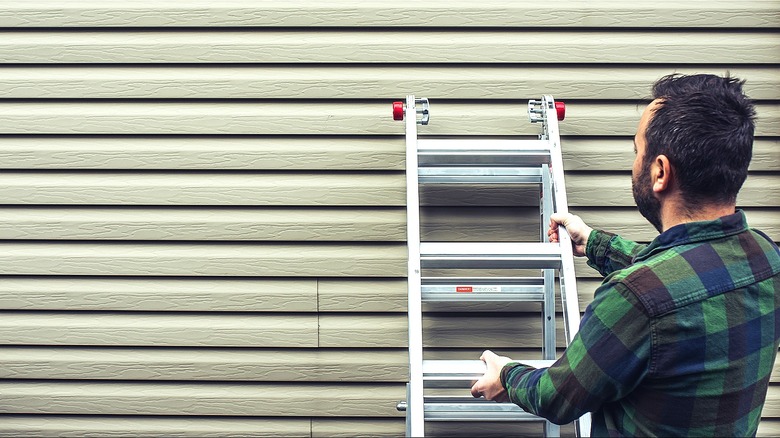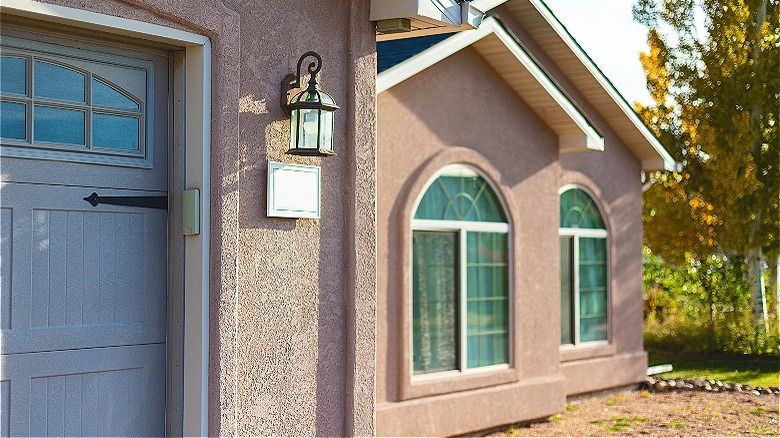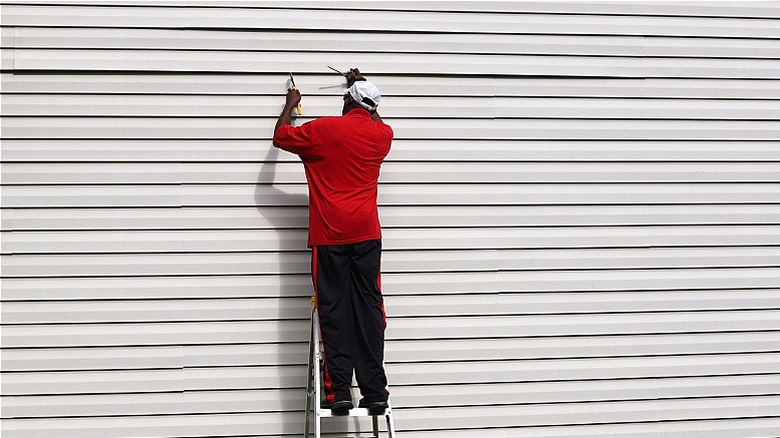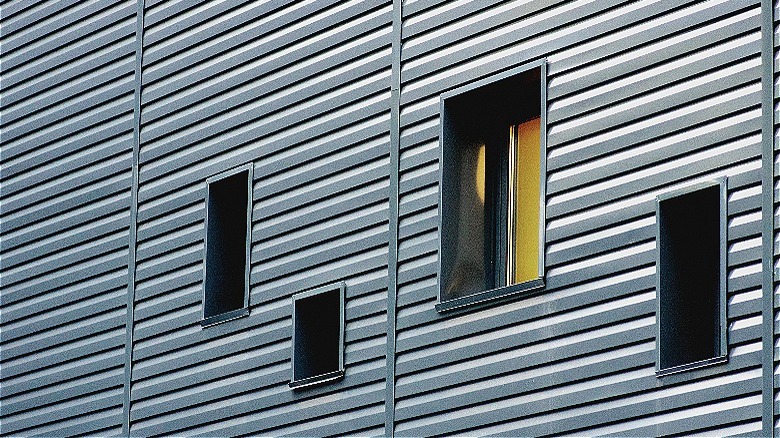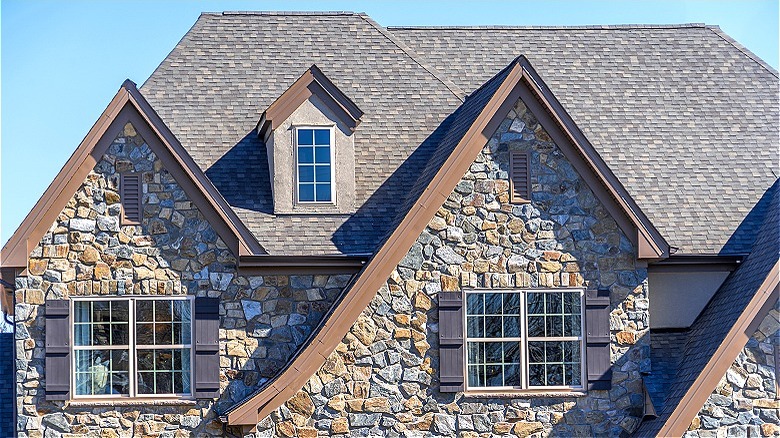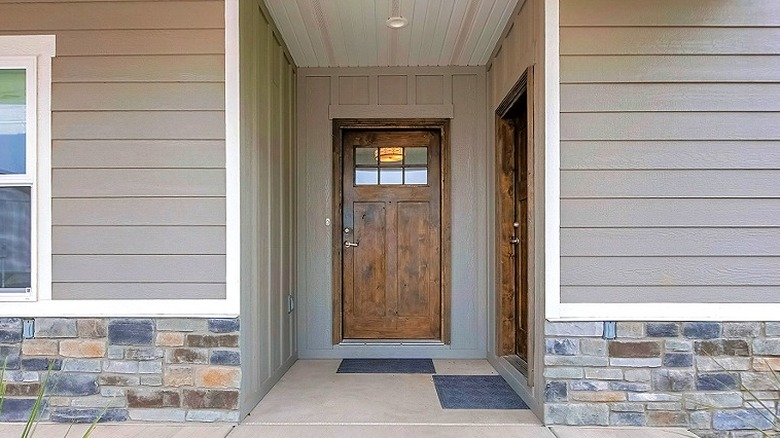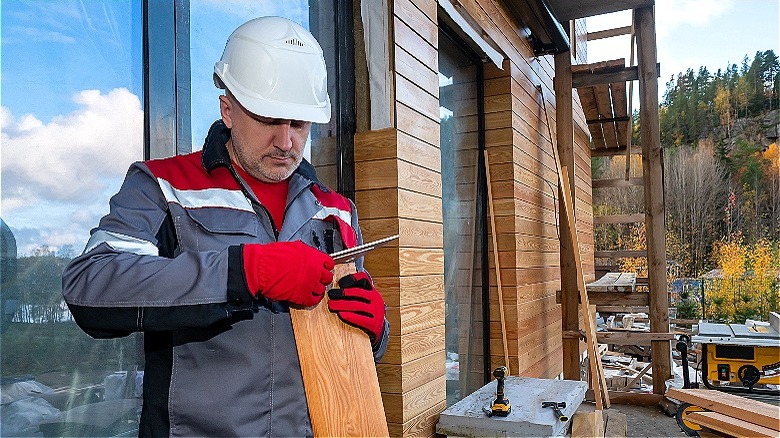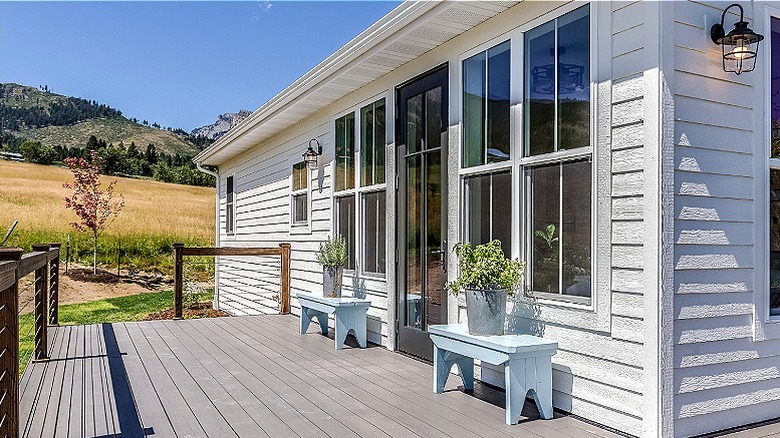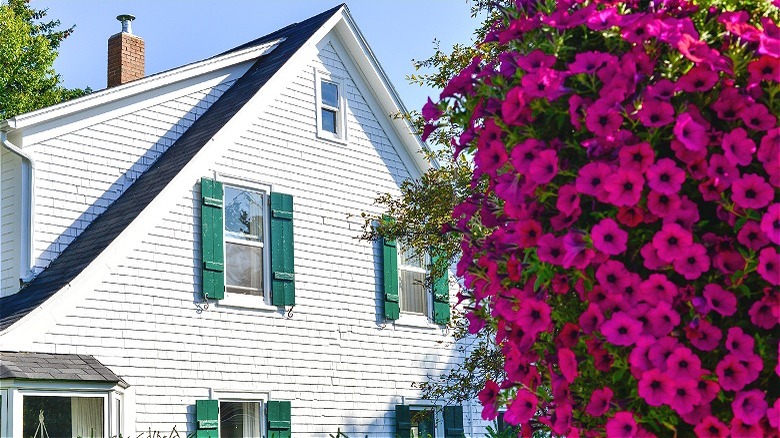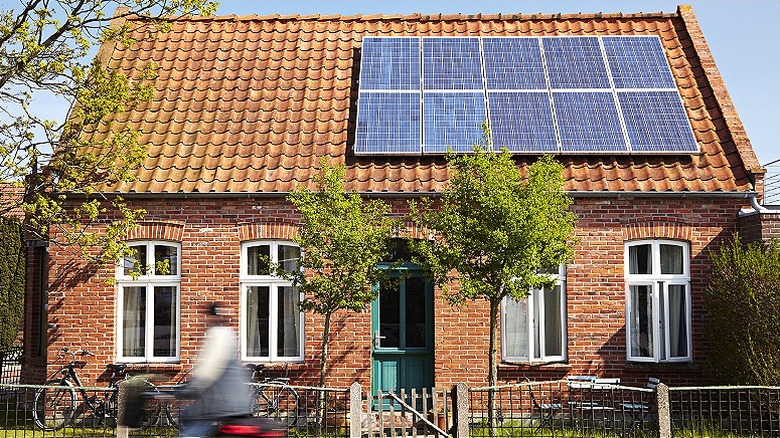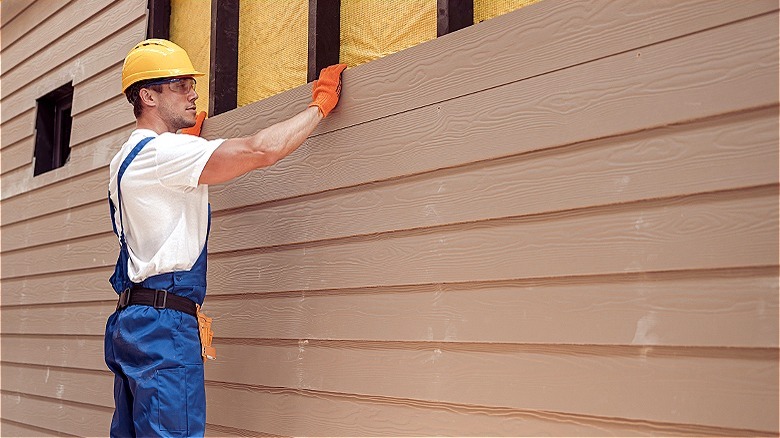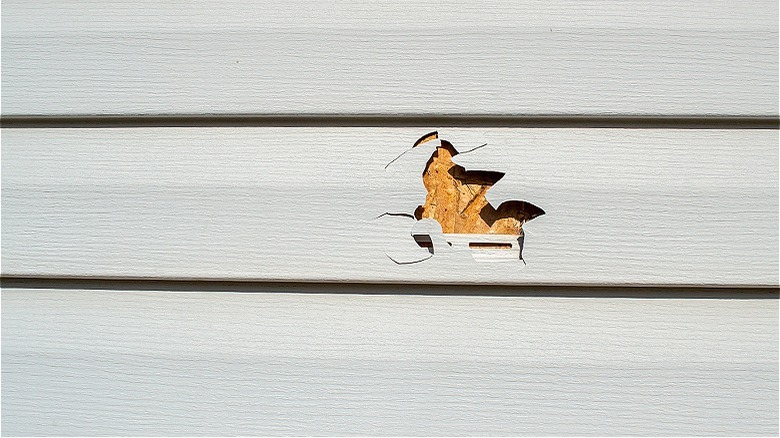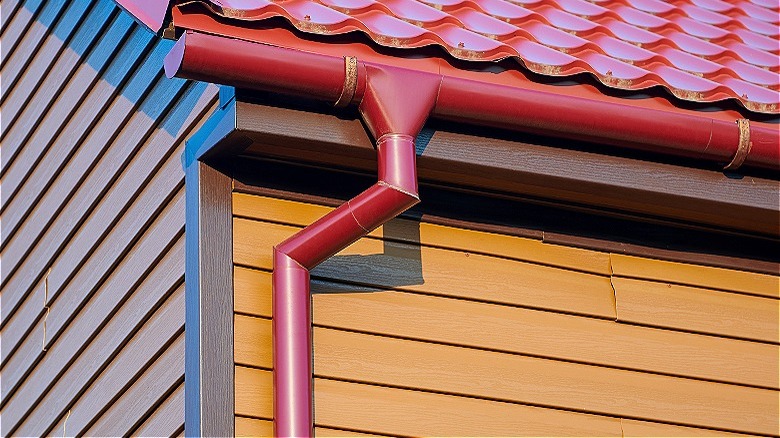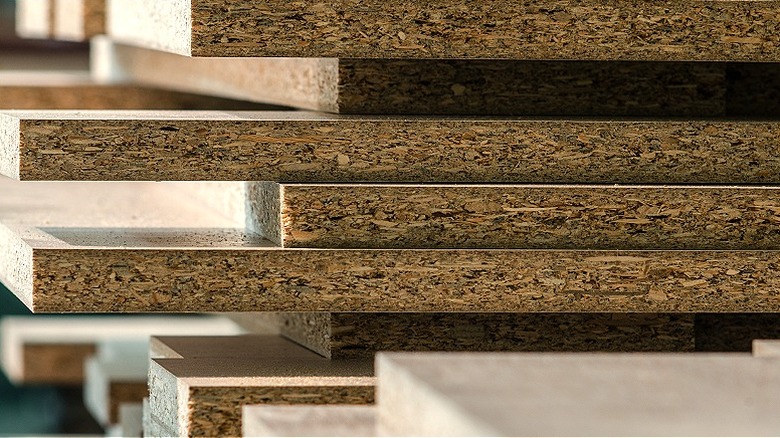Your Guide To Repairing Holes In The Siding Of Your House
No matter how well you treat your home, you're bound to face an issue with your exterior siding every now and then. Extreme weather, rough handling, and the occasional rock flung from a lawnmower can wreak havoc on any of the different types of house siding, and even a minor hole can create the opportunity for more damage down the line. Thankfully, however, you don't need to panic and give your home a total face-lift because of a minor bit of damage. Repairing a hole in siding is a fairly simple fix, even if you don't consider yourself a DIY expert or handyperson.
Before you get to work patching and sanding, however, it's important to know exactly what you're working with. There are a plethora of options for siding available on the market, and each material requires a slightly different approach to repair. With a bit of research, though, you'll be equipped with the necessary knowledge to perform a seamless fix.
Stucco
Because stucco is initially applied as a paste and allowed to dry, it's necessary to take the same approach when repairing a hole in stucco siding. To begin, use a brush to clear away any debris from the edges of the hole, then prepare your paste. Options like Sikacryl Ready-Mix Stucco Patch from Sika USA don't require anything but a thorough stir, but some formulas need water to reach the desired texture. Apply your patch mixture in thin layers with a spatula, clean up the edges with water, then allow to dry before painting. The patch formula should match the existing wall texture and leave you with a seamless finish.
Vinyl
Vinyl is one of the most popular options for siding thanks to its cost effectiveness, but it's also fairly prone to damage when faced with more extreme conditions. Thankfully, however, repairs are simple. To begin, it's necessary to determine the size of hole you're facing. For small holes, simply fill with caulk and sand the surface until flush. Medium holes easily fill with a similar method, but remove the piece of siding and apply a mesh backing before filling to keep everything in one piece. When it comes to large holes, find a replacement piece of siding that matches, trim it to size, and replace the damaged piece.
Aluminum
They might be made of completely different materials, but aluminum and vinyl siding follow a similar installation — and therefore repair — process. If you're dealing with something small, like a nail or screw hole, a bit of color matched caulk can fill the hole and disguise it without having to replace the whole panel. For larger holes, however, you need to remove the damaged pieces, gather some excess material, then install the cut down panels like a patch. For added protection, you can also use a bit of waterproof tape and gutter sealant on the edges to prevent water damage.
Natural stone
Real stone walls create a classic, sturdy look that only gets better with time, but unfortunately, the rare instances where they require repairs can be quite the hassle. Instead of simply applying some caulk or repair compound, damage to real stone siding typically means it'll be necessary to remove and replace the damaged stone. To do this, chisel out the stone that has holes or cracks, then knock away as much mortar from the hole as possible. Source a replacement stone that's bigger than the hole and trim or chip it to size, then sandwich it into the hole with some mortar to hold it in place.
Stone veneer
Repairing stone veneer is fairly similar to repairing real stone, though the process is a bit less costly and risky because the veneer pieces you're working with will likely be more uniform and cheaper to source. If you have a stone that has fallen out of place but the backing is still intact on the wall, all you need to do is fit the stone back into its spot with some mortar. If the mesh backing is damaged, however, it's necessary to clear out more stones and perform a patch job. This repair can get complex quite quickly, so it's a good idea to consult a professional first.
Wood
Wood siding is a durable and classic choice for homes, but it still requires frequent checks and maintenance to ensure it's holding up against the elements. One major aspect of that maintenance is performing repairs when necessary, but, luckily, wood is simple to patch and fill, even when on the exterior of your home. To repair a small hole or crack, all you need to do is carve out any rotted wood, apply some wood filler, then sand it down and match the existing paint or stain. For larger areas of damage, however, you might need to call in a professional to do a widespread replacement.
Fiber cement
Fiber cement boarding is essentially vinyl siding's thicker, stronger cousin, so it boasts all the cost-effective and hassle-free benefits with less risk of damage. That, however, doesn't mean that it's impossible to find yourself with holes or cracks in need of repair. For a smaller hole or thin crack, all you'll need for your patch job is a bit of putty like this DAP Platinum Patch Advanced Exterior Filler. Apply a bit with a spatula, then sand down once it's cured. For larger sections of damage, it might be necessary to cut down, remove, and replace your existing panels with an undamaged piece.
Wood shingles
You might be more familiar with shingles being used on the roof, but, when brought down to the sides of the home, they can create a charming, rustic look that's both durable and simple to repair. If you have a hole or issue with one shingle on the side of your home, your best bet is to fully replace it. Thankfully, shingles are much smaller and less expensive than a long piece of real wood siding, so sourcing is simple. Remove the damaged shingle with a pry bar, then weave the replacement into the existing pattern of shingles before nailing down to ensure a seamless finish.
Brick
Brick siding on homes is a classic choice thanks to its timeless look and unmatched durability, so it's not very often that you'll find yourself having to patch a hole. With that being said, however, there are opportunities for the occasional necessary repair, but thankfully, this issue is a deceptively quick fix. To repair a simple hole in brick siding, all you need is a bit of mortar mix, a sponge, a bucket, and a trowel. Look for a mortar mix that matches your brick's color, then mix it up and pack it in the hole. Smooth with the trowel, then tap with a damp sponge to add texture.
Engineered wood
Engineered wood siding is cheaper than real wood, though it's one of the more durable options out there. Thankfully, this means you won't have to make many repairs or undergo involved replacements, but, if you find yourself needing to patch small holes, it's not very difficult. To fill minor spots of damage, all you need is a bit of exterior putty. Completely fill the hole or crack, then allow it to fully set. Gently sand until everything is flush and add a bit of paint to match the existing siding, and your home's exterior will look as good as new in no time.
Insulated vinyl
It might look the same from the outside, but insulated vinyl siding and regular vinyl siding have one major difference hidden beneath their plastic outer layer: insulated vinyl has a thin layer of foam that helps to better protect the inside of the home from both hot and cold weather. This one change, however, means a major difference in price, but the repair process is generally the same. Small and medium holes can still be filled with caulk, but, if you need to trim down a piece of siding to perform a full replacement, you might need a more heavy-duty saw to get through it.
Steel
Steel siding is an incredibly durable choice to cover the exterior of your home, but this material can run into issues with deterioration and rusting if damage is left to sit. If you're working with a small hole, this process is simple — just fill with a bit of epoxy, then allow everything to fully cure and paint to match the existing color, if necessary. If it's larger, however, you might need to create a patch, similar to repairing aluminum siding. Purchase a few pieces of new siding or work with what you have on hand, then remove the damaged piece and replace it with new material.
Oriented strand board
Oriented strand board, commonly shortened to OSB, is another common substitute for real wood siding that's similar to particle board. This product is fairly durable and resistant to damage, but it does have one major weakness: water. Because of this, it's important to seal up any holes and damage to prevent warping and deterioration from the elements. If you only have a small hole that hasn't caused any further issues, a simple fill with wood filler and an additional coat of sealant should do the trick. For a large section that's water-damaged, however, you might have to cut away the rot and replace the piece with new material.
